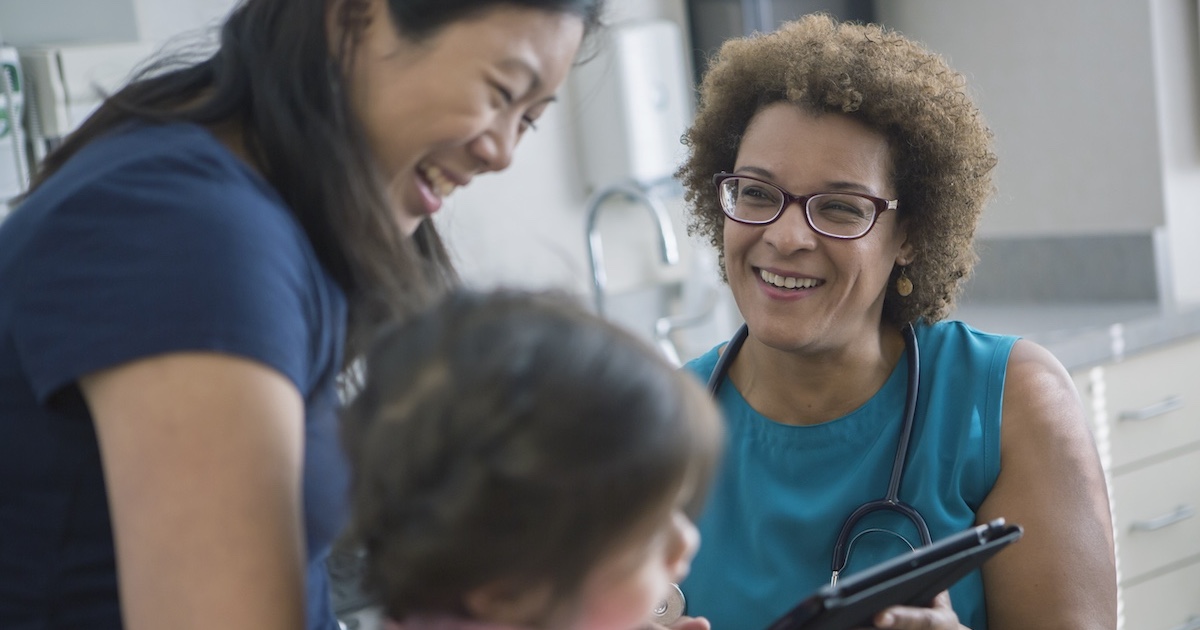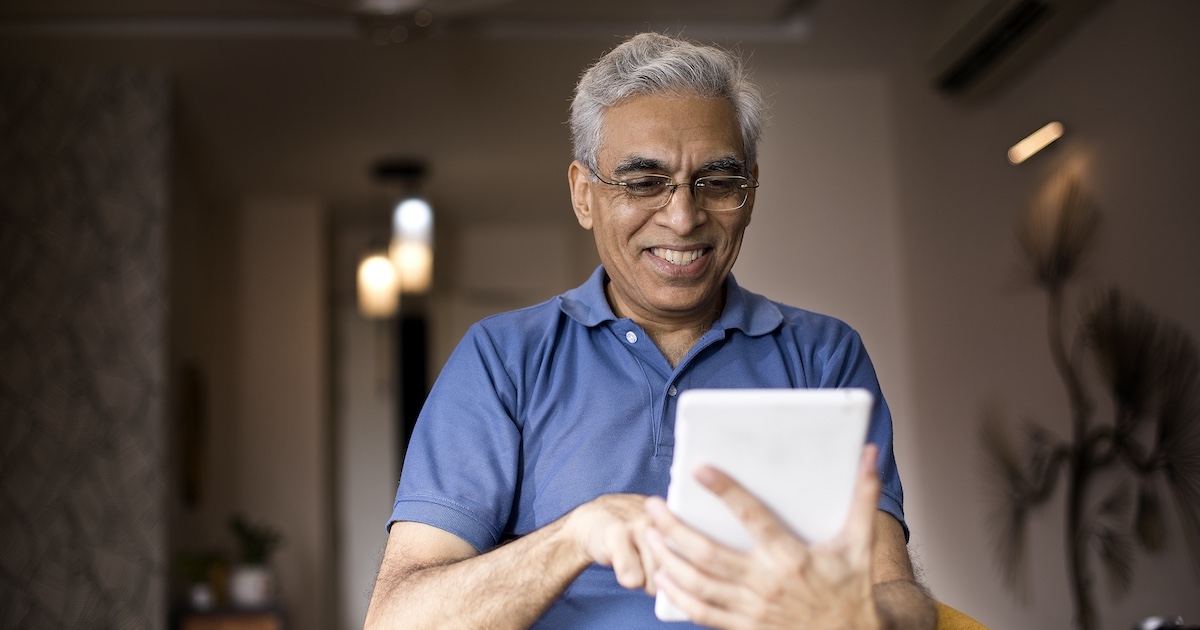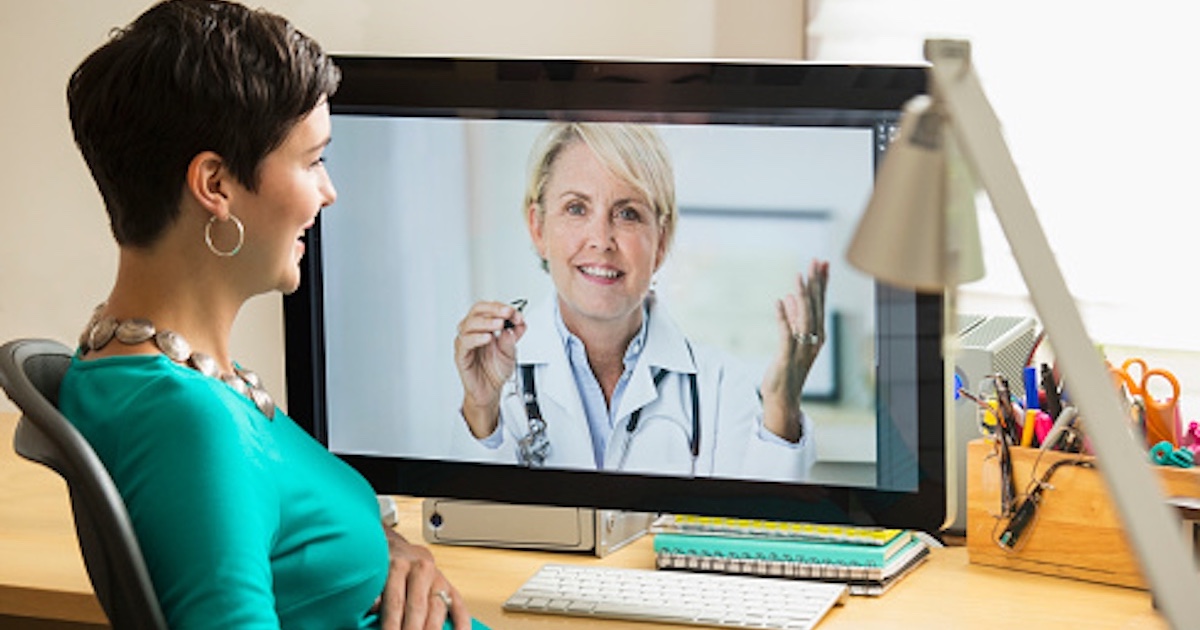 Teams have been preregistered for the Qualcomm Tricorder X Prize -- a handheld medical scanner competition backed by the Qualcomm Foundation -- for nearly a year. In fact, 255 teams were reported as preregistered last year. But representatives of the $10 million prize have now announced the 34 teams that have completed the full registration and paid $5,000 to $10,000 entry fees (depending on the timing of their registration.) This is the first time the prize has publicly disclosed all the participants.
Teams have been preregistered for the Qualcomm Tricorder X Prize -- a handheld medical scanner competition backed by the Qualcomm Foundation -- for nearly a year. In fact, 255 teams were reported as preregistered last year. But representatives of the $10 million prize have now announced the 34 teams that have completed the full registration and paid $5,000 to $10,000 entry fees (depending on the timing of their registration.) This is the first time the prize has publicly disclosed all the participants.
"We're in what now is called the qualifying round," Dr. Erik Viirre, the technical and medical director of the prize, told MobiHealthNews. "So this is a process where, in the spring, a website will be opened where teams will be submitting documentation of [their entries]. We will have a series of expert judge panels review this documentation and rank them. The top ranked teams will be invited to then participate in the finals of the competition, in the winter of 2014."
The first in-person event will be next week, when teams will meet up to give formal presentations, assess the competition, and possibly discuss partnerships if teams have complementary strengths and weaknesses. X Prize officials will also go over the minutiae of the competition guidelines with the teams. The event will not be open to the public or the media.
The 34 teams come from across North America, Europe and Asia. A few are already known commercial companies like Scanadu, while others have no public information available except their name, city of origin, and team leader. Here are the 34 teams:
Scanadu -- Moffet Field, California
Scanadu probably needs no introduction. The company, led by CEO Walter de Brouwer, raised a record breaking $1.6 million on Indiegogo to build its home medical scanner device. X Prize technical and medical director Viirre, however, said the company does not have the competition locked down.
"Scanadu has done a lot of things and had a very public face about their technology and their efforts and we think that's fabulous and a real demonstration of the value of this technology," he told MobiHealthNews. "That said, the technologies Scanadu has talked about publicly would not be competitive in the finals of the competition."
On the other hand, de Brouwer has told MobiHealthNews in the past that marketable consumer product is a higher priority for the company than the prize.
Aezon, formerly Aegle -- Baltimore, Maryland
Aezon, led by Tatiana Rypinski, is the new official name of the Johns Hopkins Tricorder X Prize team. The team's approach includes a cloud infrastructure, which uses Blueprint Health-backed Symcat for symptom evaluation; a wearable device for continuous vitals monitoring; a modular, Bluetooth-enabled lab box for additional tests; and a smartphone app to act as the user interface for the system. The team is made up of undergraduate students from different Johns Hopkins University departments and partnered with the Center for BioEngineering Innovation and Design.
Algonquin College -- Ottawa, Ontario, Canada
This Canadian university team, led by John Omura, isn't publicly sharing much about its contest entry yet. However, Algonquin College is a vocational school with a focus on technology and it recently partnered with Palomino System Innovations to open its Health and Wellness Research Centre. An early project of the Centre focused on mobile EHRs.
Alpha Lab -- Yuseong-Gu, Daejeon, South Korea
This South Korean entrant is something of a mystery. The team is led by a Bill Choi, who could be the same Bill Choi as the CEO of nanoLambda, a Pittsburgh, Pennsylvania-based sensor company working on bio-chemical detection and wearable health monitoring, among other things.
BioScan.me (Intention Technology) -- Ridge Manor, Florida
Although entered into the competition as BioScan.me, this Florida-based tech company is now known as Intention Technology. Team leader Tracy Ingraham has focused on biofeedback and predictive analytics for hospitals. He participated in a Sarasota, Florida TedX talk, which can be viewed online here.
Danvantri (American Megatrends) -- Chennai, Tamilnadu, India
The only Indian entrant in the competition, Danvantri seems to offer a wide range of products, but the area most likely to form the basis of their Tricorder entry is its AMI Vitals+ system, which the company describes like this: "AMI Vitals+ is a unique system in which NiBP (Non-invasive Blood pressure), Pulse Oximeter and temperature are combined into a small form factor device which gets controlled from a mobile device. AMI Vitals+ supports Android and iOS phones and tablets and also desktop users. Patient can check the vitals at home and pay the Hospital/Doctor through EHR login for the consultation which will be integrated with the Hospital HIS."
Distributed Health Labs -- La Jolla, California
DH Labs is another university spinoff team, this one coming out of the University of California, San Diego. The team sports a diverse team from around the world with backgrounds in a number of different subjects. "The DH global tricorder team spans disciplines from Nanoengineering and Medicine to Machine learning, Cryptography, crowd sourced archeology and human and computer ethnography," the company writes. "We are unified in our goal to produce an affordable transformative and open product to enable health-care around the world."
 Biosign's PulseWave MAX
Biosign's PulseWave MAX
CloudDX (Biosign) -- Markham, ON, Canada
Biosign, entered into the competition as CloudDx, will be entering a device called Pulsewave MAX into the competition.
"To qualify for the X-Prize Finals in April 2014, a “Tricorder” has to measure 5 vital signs, continuously log that data in the Cloud, and correctly diagnose three common diseases, all within current medical ‘best-practice’ standards. Currently no single device can come close to this," the company writes on its website. "Biosign owns part of the solution: Pulsewave MAX can currently measure all 5 vital signs simultaneously (blood pressure, oxygen, ECG, heart rate & temperature). We are in the process of forming collaboration with a partner company that owns the other half: a remarkable new technology that can detect pathogens & analyzes from a single drop of fluid (saliva, blood or urine). Combined, we believe that our technologies constitute a qualified “Tricorder” X-Prize Finalist entry."
DNA Med Institute -- Cambridge, Massachusetts
The DNA Med Institute has been developing its rHEALTH sensor for a use case very appropriate to the Tricorder X Prize's Star Trek nomenclature: diagnostics in space. "The rHEALTH sensor is designed to extract a multitude of diagnostic information from a single drop of blood," reads the company's website. "Although designed for use in reduced-gravity environments in space, the technology can be applied to real-time health monitoring at patient’s bedside or in a doctor’s office, and allow for real-time clinical intervention in acute situations." The company has partnered with NASA, the NIH, and the Bill and Melinda Gates Foundation.
Doc-In-Box -- Tempe, Arizona
There's not a lot out there about this team, except that it's headed by Stephen Albert Johnston, the head of the Biodesign Institute at Arizona State University. Johnston was dreaming up a "Doc in a box" concept -- "a box you could put on your dining room table that could assess hundreds to thousands of components from a drop of blood to determine your health status," according to a piece in a local newspaper -- as early as 2005.
Dynamical Biomarkers Group -- Zhongli City, Taoyuan County, Taiwan
This team represents the Center for Dynamical Biomarkers and Translational Medicine, a Taiwanese research group founded in 2011 with a grant from the country's National Science Council. The team is led by Chung-Kang Peng, a Harvard Medical School professor currently on leave to work with the National Central University in Taiwan.
Final Frontier Medical Devices -- Paoli, Pennsylvania
This team, whose name is also a nod to Star Trek, is made up of two brothers: Basil Harris, an emergency room physician, and George Harris, a network engineer. The team was founded expressly for the competition, and the brothers aren't saying much about their entry.
InSilixa -- Sunnyvale, California
This team, led by Arjang Hassibi, writes on its website "InSilixa is building the next generation of high-performance CMOS biochips for microarray technology, qPCR, and DNA sequencing. We are currently in the stealth mode." The team also competed in the X Prize's sister contest, the Nokia Sensing X Challenge and took home one of the five $120,000 Distinguished Prizes. They described their Nokia entry as a "hand-held and fully-integrated point-of-care (PoC) DNA-based diagnostic tool".
Juxtopia Imhotep -- Baltimore, Maryland
Juxtopia is a group working on various initiatives to improve Science, Technology, Engineering and Math (STEM) in underserved and urban populations. Their X Prize team Imhotep, however, is still in stealth mode.

Phrazer -- Duluth, Minnesota
Phrazer, from GeaCom, is not a new name to MobiHealthNews readers, though it is a bit of a surprise as a Tricorder X Prize entry. When we wrote about the device in 2010, reading a patient's vital signs was a secondary function. Primarily, the device served in the role of another piece of Star Trek tech -- the universal translator. The device was designed to help patients who speak one of 100 different languages to communicate essential information to their doctors. In 2011, GeaCom inked a partnership with T-Mobile.
MESI Simplifying Diagnostics -- Ljubljana, Slovenia
MESI currently has one product listed on its website, a screening device for peripheral arterial disease. It measures both blood pressure at the upper arm and ankle-brachial index and takes only three minutes.
Nanobiosym GENE Radar -- Cambridge, Massachussets
We wrote about Anita Goel's Nanobiosym as a prospective Tricorder entrant back in 2012. Since then the company, which uses body fluid samples like saliva or urine to analyze for DNA or RNA signature each infectious disease carries, won the $525,000 grand prize at the Nokia Sensing X Challenge. In addition to the home diagnosis and monitoring market, Goel is aiming at the global health market, as the device can diagnose diseases without constant electricity, running water, or highly trained personnel.
Photon Institute -- Cracow, Poland
Led by Zbigniew Karkuszewski, the Photon Institute describes its primary operations as "development of custom made scientific instruments for spectroscopy, photonics, and pneumatics; design and production of experiment control systems with data acquisition; and development and applications of [their] own technologies".
PYTHIA -- Karpathos, Greece
PYTHIA is led by Georgios Bertos. A Georgios Bertos, likely the same one, works at medical device company Baxter Healthcare in Chicago, where he serves as lead R&D Systems Designer.
Luminar -- Newport Beach, California
Luminar Technologies is led by Stanford grad Austin Russell.
SCANurse -- London, United Kingdom
SCANurse, led by Anil Vaidya, is in stealth mode, but the company entered a Cambridge Wireless startup contest and posted a short description there. "The device will utilize both existing and new technologies and employ sensors in novel applications that breaks the mould of traditional diagnostic technologies," the company writes. "The success of the device will also involve of novel design form factors and user interface."

TactioHealth -- Montreal, Quebec, Canada
Tactio is a health and fitness app company with a large portfolio. The company also sells third-party connected devices on its online store. Tactio apps track weight loss, blood pressure, activity, and diabetes. The company has never before built original hardware, though, so it's likely that it's in the competition with the intention of joining forces with another team.
SDSU X Team -- San Diego, California
The SDSU X Team is San Diego State University's entry. The team has been working on the tricorder since at least April, when the San Diego Union-Tribune wrote that the university had "pulled together 60 people from across campus and elsewhere to work on an entry that is among the most ambitious science and engineering collaborations in SDSU history. Participants include bioengineers, software specialists and business experts".
SMART McCoy (DNAmicroarray) -- Carlsbad, California
Named after the Starship Enterprise’s chief medical officer, SMART McCoy is representing CiBots, Inc., a company that builds virtual humans and avatars for day-to-day life and healthcare. The team is led by CiBots Founder and serial entrepreneur Babak E. Azad Ph.D.
Splendo -- Wassenaar, The Netherlands
The Splendo Foundation is a Dutch company founded just this year. The company seems to be seeking a partner in the competition. "Splendo ... hopes that the Qualcomm Tricorder X PRIZE will encourage participating teams to share knowledge and ideas to ensure the perfect Tricorder actually comes within hand's reach," they write on their website. "The result of the commitment in each team, but also that of the joint teams, will therefore be higher than the sum of its parts."
Team Gen Z -- Bellevue, Washington
Although Tricorder lists the team leader as Catherine Wong, Viirre tells us this team is actually led by Jack Andraka, the 16-year-old who famously invented a cheap and accurate sensor for detecting pancreatic cancer last year, winning the 2012 Intel Science Fair. Andraka's team is (or at least was as of March, according to the Daily Mail) made up of all teenagers, working remotely from around the world.
Team Aristaeus -- Davie, Florida
Team Aristaeus, named after a minor Greek god, is led by Rolando Branly, a professor at Broward College.
The Genie -- Dumas, Arkansas
Team leader Dr. Roger Mason works with Broadhaven Associates, a consulting firm. His Broadhaven bio states: "Based on his experience in surgical practice, Dr. Mason has developed three patented technologies to improve the delivery of healthcare. One of the inventions, the Genie, revolutionizes the effectiveness of the electronic medical record." According to that patent, the Genie is a "a computer-implemented interactive diagnostic medical records system operated in conjunction with at least one user device" such as a smartphone, laptop, or tablet.
 VisualAnt's ChromaID scanner
VisualAnt's ChromaID scanner
VisualAnt -- Seattle, Washington
VisualAnt has an interesting approach to the competition, using its ChromaID structured light camera technology. "The Qualcomm Tricorder X Prize provides a great catalyst for our research team to apply our ChromaID technology to enhance mobile healthcare devices," Ron Erickson, president and CEO of Visualant, said in a statement in July. "We are also excited about the potential to collaborate with other teams through the framework provided by the X Prize organization."
Vandalabs Q-corder Med Team -- Princeton, West Virginia
Vandalabs Q-corder Med Team is led by Mary-Jocq Holroyd.
VOXearch -- Thousand Oaks, California
VOXearch is a stealth-mode startup currently participating in the 101 incubator. The team is lead by Alan DeRossett.
yu-scan -- Chepstow, Monmouthshire, United Kingdom
Yu-scan team leader Ben Bacon writes on his about.me profile "Along with 20 years in Chiropractic, my contacts in the field of biomimetics, sensor design, air, DNA and liquid analysis, and potentiostats have instilled in me a belief that it is possible to build a tricorder driven by the open source community."
Zensor (Intelesens) -- Belfast, United Kingdom
Intelesens is a clinical sensor and electrode company, developing technology for patient monitoring in home, hospital, and assisted living contexts. Its zensor product "facilitates real time monitoring of ecg, heart rate, respiration rate and motion", according to the company. Shannon Montague leads the team.
Zyto -- Linton, Utah
Zyto makes the Zyto hand cradle, a technology the company claims can learn about the user's body through "biocommunication."
"Using the body's natural energetic field, a communication link is established between the patient and the computer via the ZYTO hand cradle," the company writes on its website. "Through this connection, ZYTO sends stimuli and then records the body's response. This conversation is called biocommunication, and it provides insights into health and wellness."


